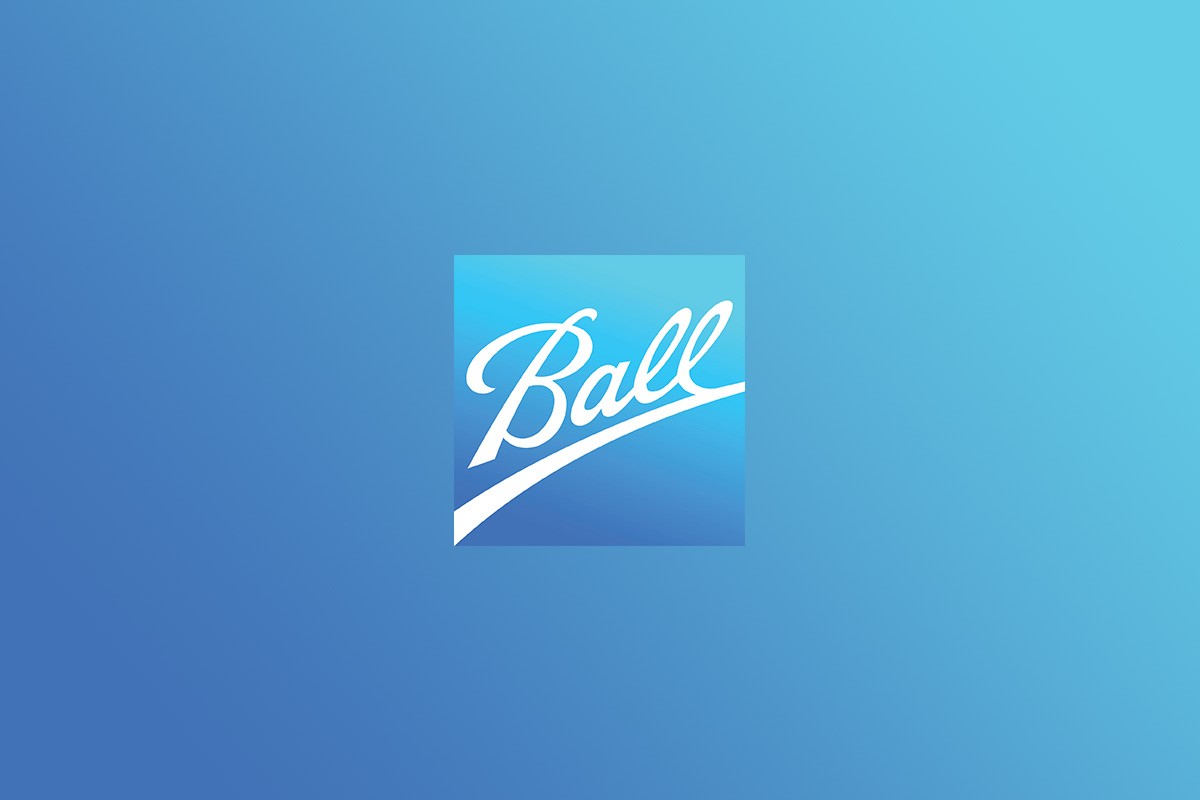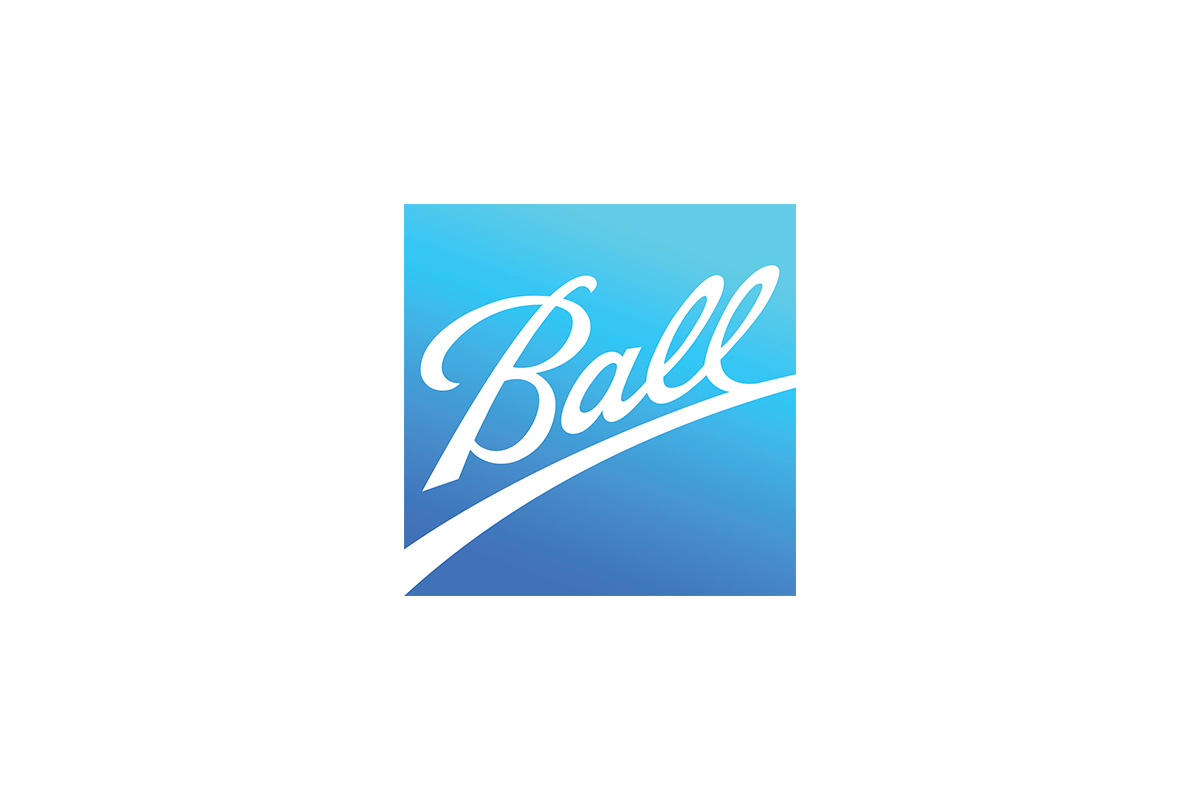Ball Corporation (NYSE: BALL) today reported, on a U.S. GAAP basis, third quarter 2022 net earnings attributable to the corporation of $392 million (including a net after-tax gain of $154 million, or 49 cents per diluted share for business consolidation and other non-comparable items, including the gain on disposal for the Russian beverage packaging operations) or diluted earnings per share of $1.24, on sales of $3.95 billion, compared to $179 million net earnings attributable to the corporation, or 54 cents per diluted share (including net after-tax charges of $134 million, or 40 cents per diluted share for business consolidation and other non-comparable items) on sales of $3.55 billion in 2021. Results for the first nine months of 2022 were net earnings attributable to the corporation of $664 million, or $2.07 per diluted share, on sales of $11.80 billion compared to $581 million, or $1.75 per diluted share, on sales of $10.14 billion for the first nine months of 2021.
Ball’s third quarter and year-to-date 2022 comparable diluted earnings per share were 75 cents and $2.34, respectively, versus third quarter and year-to-date 2021 comparable diluted earnings per share of 94 cents and $2.52, respectively. The impact of unfavorable foreign exchange translation on comparable net earnings was 3 cents per diluted share in third quarter of 2022, and 7 cents per diluted share for the first nine months of 2022.
Details of segment comparable operating earnings, business consolidation and other activities, business segment descriptions and other non-comparable items can be found in the notes to the unaudited condensed consolidated financial statements that accompany this news release. References to volume data represent units shipped except where specifically referenced otherwise. Beginning in the fourth quarter of 2022, year-over-year global and EMEA segment volume data will exclude the impact of the Russian beverage can business sale completed in third quarter of 2022.
“Our year-to-date comparable net earnings reflect resilient global demand for our sustainable aluminum beverage and personal care packaging solutions, up 3.2 percent and 11.2 percent, respectively, and solid aerospace segment performance, offset by inflation and unfavorable foreign exchange translation headwinds. During the quarter, we proactively prepared the business for continued macroeconomic volatility by executing a comprehensive fixed and variable cost-out plan. In 2023, the cost-out plan benefits of at least $150 million will more than offset the loss of operating earnings from the recently divested Russian beverage can business and will be complemented by net contractual inflationary cost pass through across all of our packaging businesses throughout 2023 and beyond. Our recent actions will reinforce Ball’s durable growth characteristics, significantly improve our cost structure, maximize cash and EVA generation, and improve our financial performance in 2023 and beyond,” said Daniel W. Fisher, president and CEO.
Beverage Packaging, North and Central America
Beverage packaging, North and Central America, segment comparable operating earnings for the third quarter 2022 were $205 million on sales of $1.80 billion compared to $186 million on sales of $1.52 billion during the same period in 2021. For the first nine months, segment comparable operating earnings were $543 million on sales of $5.18 billion compared to $519 million on sales of $4.34 billion during the same period in 2021. Year-over-year sales reflect the contractual pass through of higher aluminum costs.
Third quarter segment comparable operating earnings improved year-over-year due to higher volume offset by the impact of higher manufacturing and inflationary costs and unfavorable customer mix. Segment volumes increased 2.5 percent in the third quarter and aluminum beverage packaging continues to be more resilient than other substrates. Despite this favorable trend, customer demand continues to be lower than expectations driven by higher year-over-year retail prices impacting consumer demand, particularly in the U.S.
In response to lower than expected near-term demand and to optimize low-cost production across our North American manufacturing footprint, during the quarter the company announced permanently ceasing production at the company’s Phoenix, Arizona, and St. Paul, Minnesota, facilities, in the fourth quarter of 2022, and the first quarter of 2023, respectively, resulting in approximately $65 million of fixed cost savings largely in 2023 and beyond.
Beverage Packaging, EMEA
Beverage packaging, EMEA, segment comparable operating earnings for third quarter 2022 were $82 million on sales of $1.03 billion compared to $125 million on sales of $937 million during the same period in 2021. For the first nine months, segment comparable operating earnings were $311 million on sales of $3.11 billion compared to $349 million on sales of $2.64 billion during the same period in 2021. Year-over-year sales reflect higher shipments and the contractual pass through of higher aluminum costs offset by unfavorable foreign exchange translation and the sale of the Russian operations during the third quarter of 2022. Historical results for the Russian operations will continue to be reflected in beverage packaging, EMEA segment results. See Note 1 “Business Segment Information” for additional information about the sale agreement and historical results.
Third quarter segment comparable operating earnings decreased versus the same period in 2021 and reflect 5.5 percent segment volume growth being more than offset by unfavorable currency translation, the impact of higher inflation, energy costs and supply chain disruptions across the region and unfavorable year-over-year performance in the Russian business ahead of the sale. Packaging mix shift to aluminum cans supported by ongoing packaging legislation in certain countries continues to be a driver of aluminum beverage packaging growth. Given strong regional demand, the construction of new beverage can manufacturing facilities in the U.K. and Czech Republic remain on track and will enable further growth for sustainable aluminum beverage packaging across the region. Projects are supported by long-term contracts with improved contractual terms and conditions. In advance of new production coming online in EMEA, imports from the company’s joint venture beverage can manufacturing facility in Saudi Arabia supplemented existing production capabilities across Europe during the quarter.
Beverage Packaging, South America
Beverage packaging, South America, segment comparable operating earnings for third quarter 2022 were $67 million on sales of $466 million compared to $74 million on sales of $462 million in 2021. For the first nine months, comparable segment operating earnings were $197 million on sales of $1.49 billion compared to $245 million on sales of $1.40 billion during the same period in 2021. Year-over-year sales reflect lower revenue recognition volumes, the contractual pass through of higher aluminum costs and regional price/mix. Third quarter segment comparable operating earnings decreased year-over-year and reflect unfavorable regional customer/product mix and fixed cost absorption in Brazil.
Demand trends across the company’s South American operations remain favorable as we enter the summer selling season and shipments during the third quarter were up 5.2 percent. During the quarter, the company permanently ceased operations at its Santa Cruz, Brazil, beverage can manufacturing facility to further optimize low-cost production across our broad Brazilian manufacturing footprint. This action will generate approximately $10 million of fixed cost savings and aid supply/demand balance across Brazil.
Aerospace
Aerospace segment comparable operating earnings for third quarter 2022 were $47 million on sales of $477 million compared to $46 million on sales of $498 million in 2021. Third quarter backlog reached $3.0 billion, and contracts won, but not yet booked into backlog, ended the quarter at $4.6 billion. For the first nine months, segment comparable operating earnings were $126 million on sales of $1.47 billion compared to $115 million on sales of $1.38 billion during the same period in 2021.
Third quarter segment comparable operating earnings reflect solid execution on existing and new programs offset by supply chain inefficiencies. The segment continues to leverage its talent, manufacturing and test capabilities, engineering, and support workspace to secure additional defense, climate change and Earth-monitoring contracts to provide mission-critical programs and technologies to U.S. government, defense, intelligence, reconnaissance and surveillance customers.
In mid-November, the joint NASA and NOAA Earth observation JPSS-2 satellite with the Ball-built OMPS (Ozone Mapping Profiler Suite) is scheduled to launch from Vandenberg Space Force Base. Ball’s contributions to the JPSS series of satellites reinforces our commitment to delivering extreme weather data, weather forecasts and ozone measurements to develop climate models and monitor global ozone and atmospheric temperature. Because of its wide swath, the satellite will observe every spot on Earth at least twice daily.
Non-reportable
In addition to undistributed corporate expenses, the results for the company’s global aluminum aerosol business, beverage can manufacturing facilities in India, Saudi Arabia and Myanmar and investments in the company’s aluminum cup business continue to be reported in other non-reportable.
Third quarter 2022 results reflect higher year-over-year undistributed corporate expenses, higher aluminum cup demand in food service channels, 12.2 percent volume growth for extruded aluminum bottles and aerosol containers and 46.7 percent volume growth in the other non-reportable beverage can manufacturing facilities where certain production is being exported to support EMEA segment demand prior to new capital projects coming online in 2022. During the quarter, the company’s global aluminum aerosol customers continued to pursue next generation lightweight sustainable personal care packaging solutions and the company entered an alliance with Boomerang Water to expand usage of refillable aluminum bottled water at closed-loop venues.
Outlook
“We are focused on cost, cash and capital management. The successful completion of the Russian business sale allows us to incrementally de-leverage and focus regional resources on improving operational performance. We are controlling the things we can control in today’s global economic and geopolitical environment. Demand continues to be quite resilient and supports the durability of our earnings and cash generation. We remain well-positioned for growth and returning value to shareholders,” said Scott C. Morrison, executive vice president and chief financial officer.
“We continue to actively manage our businesses through the lens of Drive for 10 and EVA to execute cost-out initiatives, ensure tight supply/demand balance across our global plant network and benefit from contractual inflationary cost recovery to achieve our long-term diluted earnings per share growth goal over time, generate cash and return value to shareholders. Our aluminum product portfolio and aerospace technologies and offerings remain resilient and bolster our prospects for improved sustainable performance in 2023 and the years ahead,” Fisher said.



 at retail in
at retail in 
